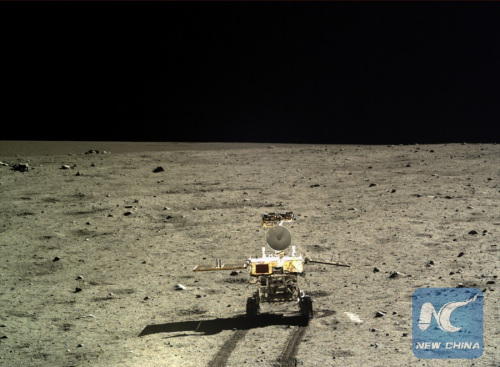
Photo taken by the landform camera on the Chang'e-3 moon lander on Dec. 22, 2013 shows the Yutu moon rover during Chang'e-3 lunar probe mission's first lunar day circle. (Xinhua file photo)
Chinese scientists have developed a system to measure the leak rate for a vacuum environment which will be used in the country's third step moon exploration program.
According to scientists at the Lanzhou Institute of Physics under the China Academy of Space Technology, the measurement system will help scientists figures out a better way to preserve samples from the moon, which are stored in a vacuum capsule, increasing the accuracy of research.
"The third step of the lunar exploration project involves taking samples from the surface of the moon back to earth," said Li Detian, chief scientist of the research team.
"The samples will be packed in a vacuum environment. The accuracy of measuring the finest leak in a vacuum capsule will have direct impact on the research result of the samples," he said.
According to Cheng Yongjun, another scientist of the team, the system they developed will ensure a similar vacuum environment as found on the moon for the samples. It will also make sure that the two kilograms samples remain uncontaminated on their way back to earth, preventing them from being affected by any kinds of environment changes including extremely high and low temperature.
China has a three-step moon exploration project; orbiting, landing and return. Chang'e-5 lunar probe is expected to be launched around 2017 to finish the last chapter of the project.


















































